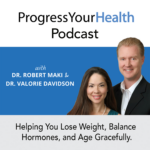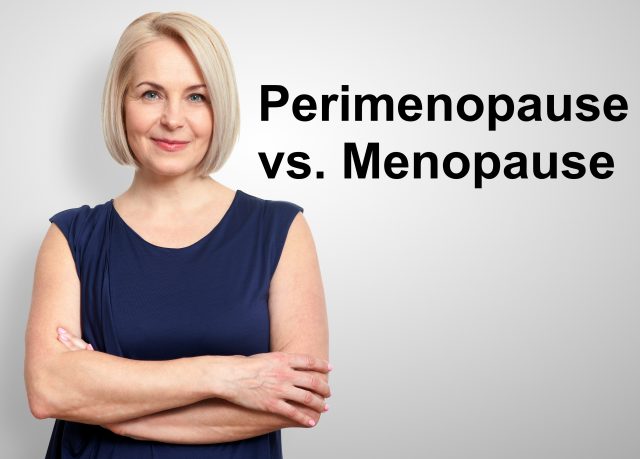
 It is common to mistake perimenopause for menopause and vice versa. Labs can be misleading. Doctors can be misleading in your concerns about whether you are in perimenopause vs. menopause. Even symptoms can be misleading. In this article, I am going to explain the differences between perimenopause and menopause. As well as information to help you determine which hormone phase you are in at the moment.
It is common to mistake perimenopause for menopause and vice versa. Labs can be misleading. Doctors can be misleading in your concerns about whether you are in perimenopause vs. menopause. Even symptoms can be misleading. In this article, I am going to explain the differences between perimenopause and menopause. As well as information to help you determine which hormone phase you are in at the moment.
Both perimenopause and menopause can start between 35 to 50years old. As the word states, perimenopause starts before menopause. While that might seem obvious, sometimes it is hard to differentiate between them. I have had many patients tell me they are in menopause but are really in perimenopause. You might be asking, ‘why is it a big deal to know the difference?’. That can come down to the treatment. Treating a woman for menopausal symptoms when she is in perimenopause can not only be ineffective. But can make the symptoms worse as well as new symptoms.
Perimenopause usually starts in the mid-’40s, but I have seen it as early as the early ’30s. The average age of menopause is 51 years old, but I have often seen it occur in the mid-’40s. So while it seems that perimenopause and menopause can overlap, there are distinctions in the symptoms.
Some distinctions between perimenopause and menopause: I will try to be as comprehensive as possible. Here are the most common differences in symptomatology between perimenopause and menopause.
In perimenopause, if you still have your uterus, then you will be having a period. The periods can change from your “normal.” But you will still be having a regular period. What you might notice are periods might be heavier, longer, more spotting, more cramping. Often this can lead to low-iron/anemia.
This is the time that women find out that they have fibroid(s). Fibroids are benign growths in the uterus and during perimenopause can become “active,” causing cramping, heavier periods and more spotting. This is usually the time women will get a hysterectomy. The periods are so “off” that most doctors only recommend a hysterectomy. Now that might correct the period “issues.” But it does nothing for the other symptoms.
In menopause, the periods become less frequent. Might miss one or many months at a time. The period that you do have can come at any time. They might be light one month and then four months later a heavy, painful period.
In menopause, you will have lots of hot flashes and night sweats. But the distinction here is, in perimenopause you don’t have daytime hot flashes. But you will have night sweats, really bad night sweats. The night sweats in perimenopause usually happen anywhere from 7 to 10 days before your period. But once you get your period, the night sweats go away.
In perimenopause, you are much more irritable than in menopause. That is one of the most common complaints in perimenopause. Short-fuse, low tolerance, very little patience for even minor offenses. The impatience and overwhelmed wound up feeling is not seen as much in menopause as it is in perimenopause.
In menopause, vaginal dryness and pain with intercourse is very common. But in both perimenopause and menopause, the sex drive can dive as well. But you do not see the vaginal dryness or pain with intercourse in perimenopause.
It is common in both perimenopause and menopause to gain weight.
Perimenopause cannot stay asleep
What happens if you have had a hysterectomy and still have your ovaries and really cannot determine if you are in peri or menopause?
Labs can be very helpful in determining your hormonal status. But there is a lot of issues with interpreting the lab results. I have had many patients that have claimed that their doctor told them they were in menopause based on their labs, but they were not.
For example, a patient I recently saw, Kim told me that her doctor said she was in menopause 5 years ago. But she had regular periods, and on her labs, there was estrogen present in her blood without taking it as a medication. She felt tired, forgetful, super irritable, terrible periods, and could not sleep through an entire night. Not to mention Kim went from a size 7 to 12 without much change in her diet and exercise routine. After speaking with Kim and looking over her lab work, she was definitely not in menopause.
Kim was dealing with symptoms of perimenopause. But the lab work can be misleading on how you interpret it. While her doctor tried to treat her for menopause with estrogen. Kim took estrogen and immediately gained 10 lbs and started bleeding nonstop. This is because the treatment for menopause to 180degree different from perimenopause.
Perimenopause has many symptoms. You do not need to “just deal with it,” “wait it out for menopause” or take medications that are ineffective and habit forming. Be sure to check out our website because we have a perimenopause course to help you navigate through perimenopause with effective options to help with your symptoms.
The post Perimenopause vs Menopause | PYHP 057 appeared first on .
Discover the common and unfamiliar symptoms that you might be experiencing. Get access to cases of real women with hormonal conditions.

In this episode, we talk about hormone treatments for perimenopause and menopause. There is a vast distinction between perimenopause and menopause when it comes to treatment options. We often see women who are being treated for menopause when they are genuinely not in menopause. Meet Linda: Linda is a listener who sent us a question […]
Recently, Catherine posted a question on our website about Biest cream, and we knew this could interest our listeners. Biest is a combination of estriol and estradiol, one of the most common forms of estrogen therapy used in bio-identical hormone replacement. There are many doses, ratios, options, and methods of using Biest, so we thought […]
Welcome to the Progress Your Health Podcast! This is a podcast that helps you learn about balancing hormones, especially during perimenopause and menopause. We love hearing from our listeners. If you have a question, please visit our website and click Ask the Doctor a question. Let’s read Brigitte’s question! I have been listening and learning […]
In this episode, we talk about the difference between perimenopause and menopause. Both Dr. Maki and I (Dr. Davidson) have worked with women in perimenopause and menopause since 2004 and sometimes get a bit myopic and technical when it comes to explaining the differences. The other day, a patient of Dr Maki’s asked the question, […]
We recently got a great question from a listener and want to share it with you. This question is about a perimenopausal 51-year-old female. She is still menstruating and having confusion about her hormone testing and the hormone therapy that she is currently taking. She is experiencing some breast tenderness and irritability related to her […]
in this episode, we answered a listener’s question. We love questions from listeners. If you have a question, please visit our website and click Ask the Doctor a question. Here is the listener’s question: I have been perimenopause for at least 4 years now I am 47 and after completing a Dutch test with a […]